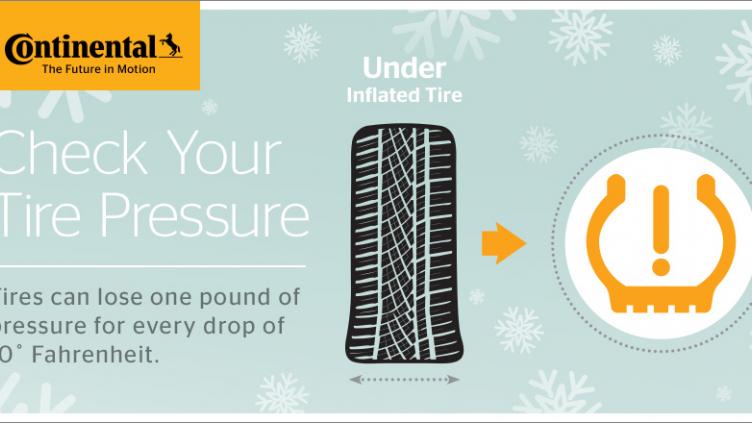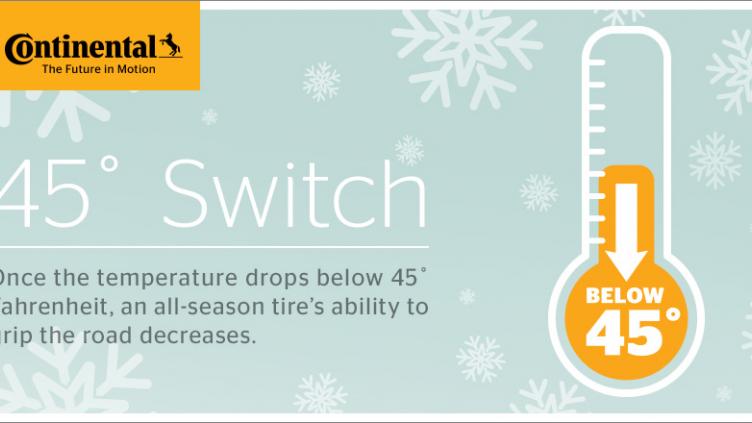
October signals the start of Fall but it’s also National Fall Car Care Month. Before Old Man Winter makes his appearance, now is an excellent time to start planning for driving in rain, snow and icy conditions. Most of us will drive in some sort of wet weather at some point this fall and tire maintenance is key to helping you navigate those winter roads. We’ve compiled five quick maintenance tips to make your winter a little easier.
Tire To-Do’s –Check your tire pressure, including the spare. Tires can lose one pound of pressure for every drop of 10-degrees Fahrenheit so it’s important to follow the pressure outlined in the owner’s manual for your vehicle. You should also inspect tires for bulges and bald spots.
Make sure to check the tread depth of your tires before winter hits. If your tires don’t contain our Tuned Performance Indicators in the tread, this can be done by placing a penny into several tread grooves across the tire. If part of Lincoln’s head is always covered by the tread, you have more than 2/32” of tread depth remaining, which is the recommended depth per the National Highway Transportation Safety Administration (NHTSA).
Also, remember the importance of storing your summer/all-season tires.
Make the Switch to Winter Tires – Did you know that once the temperature drops below 45-degrees Fahrenheit, an all-season tire’s ability to grip the road decreases? It’s a fact. Severe weather presents a new set of driving challenges – slush, ice and hard-packed snow – and with it, the need to make the switch to winter tires if you live in a part of the country where temperatures drop below 45-degree Fahrenheit on a consistent basis.
Winter tires, like the VikingContact 7, are specially engineered to deliver a substantial increase of traction over all-season radials by as much as 25 to 50 percent! With all the performance capabilities built into today’s vehicles, they will only perform as consistently and responsively as the tires they run on. In winter weather, that can mean the difference between focused braking power and out-of-control handling.
When making the switch to winter tires, it’s also a good time to have your tires rotated.
Double Check Those Brakes – Fall is an ideal time to have your brake system checked. Brakes are necessary for vehicle safety and extremely important when driving on icy or snow-covered roads. A full inspection should include brake linings, rotors and drums.
Charge That Battery – Check your battery connections to make sure they are tight, clean and free of corrosion. Cold weather can be hard on batteries so you’ll want to check your battery and charging system. If your battery is more than three years old, you may want to replace it since there are no warning signs for a failing battery.
Heater, Defrosters and Wiper Blades – Don’t be left in the cold this winter. Make sure your heating, ventilating and air conditioning system is working properly. In addition to your comfort, it’s important this system is in working order to help with defrosting. This is also a good time to check your air filters to make sure they are clear of debris. Lastly, take a look at those wiper blades. There’s nothing worse than a smeared windshield due to a cracked or torn wiper blade. As a general rule, these should be replaced every six months. And don’t forget to check the fluid level in the windshield washer reservoir – the best defense against the dreaded muddy splash gifted to you by that passing truck and trailer.
For help making sure you have the right tires to fit winter in your neighborhood, visit your local Continental Tire dealer!


